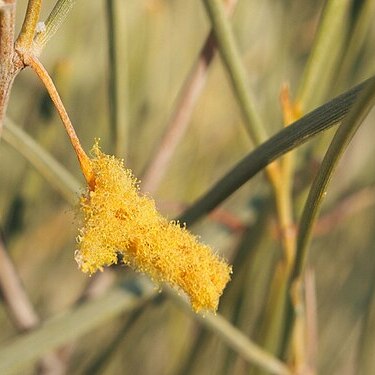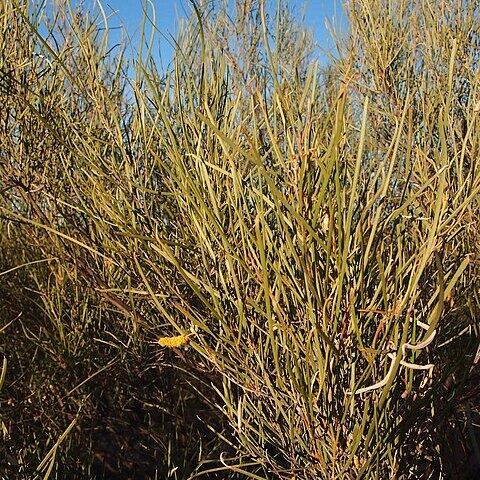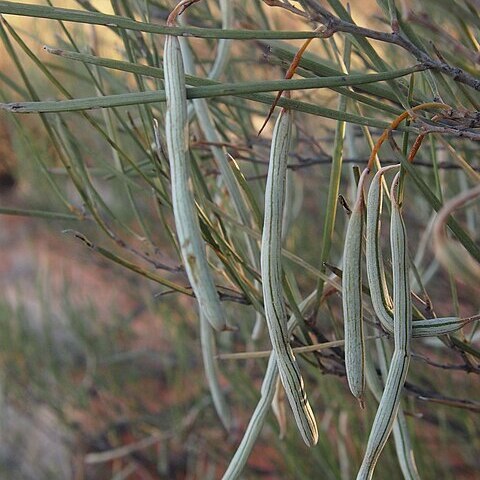Shrub to 5 m high, often spreading, with erect foliage. Branchlets white appressed-pubescent between ribs, glabrescent; resinous ribs arising from phyllode bases, with some red-glandular hairs; young tips dark, resinous. Phyllodes linear, terete to flat and thick, 7–15 (–18.5) cm long, 0.7–3.5 mm wide/diam., striate with thickish longitudinal veins, appressed-pubescent between them. Inflorescences usually single in axils; peduncles 4–15 mm long; spikes 5–30 mm long, dense. Flowers 5-(rarely 6-) merous; sepals oblong, 0.6–1.2 mm long, free or united in tube 0.2–0.5 mm long, with long hyaline hairs on margins; corolla 1.5–2.5 mm long, with long hyaline hairs on lobes or sometimes only on margins; stamens 2.5–4 mm long; ovary with dense appressed long white hairs. Pods not stipitate, cylindrical, abruptly tapered at each end, straight, to 13.5 cm long, 8–10 mm diam. (rarely 5–6 mm diam.), densely appressed silvery-pubescent in between the prominent resinous longitudinal coarsely anastomosing nerves, tardily dehiscent. Seeds longitudinal, oblong, 6–12 mm long, 4–9 mm wide, thick; aril small, terminal, pileate, creamy.
More
A small shrub 1-7 m tall. It spreads to 4-6.5 m across. The small branches are angular. They have short hairs. The leaves (phyllodes) are 10-20 cm long by 0.2 cm wide. They are linear and straight. They are round in cross section. The flowers heads are rods 1-2 cm long. They are deep yellow. There are many flower heads and they occur either singly or in pairs. The flower stalks are 0.5-1 cm long. The pods are 7-13 cm long by 0.2-1 cm across. They are marked with narrow lines, sticky and woody.
In the central part of its range the species usually occurs on sand on dunes or in sandy loam in swales, occasionally dominant; on the eastern and southern fringes of its range, on shallow stony soils associated with lateritic outcrops; and in the west on deep red sands and loams.
More
It grows in arid regions. It is drought and frost resistant. It requires a well drained soil and a sunny position. It can grow on limestone soils.
Found in a wide variety of habitats including rocky hills, sand or loam in Mulga communities or eucalypt woodland, or clay.




